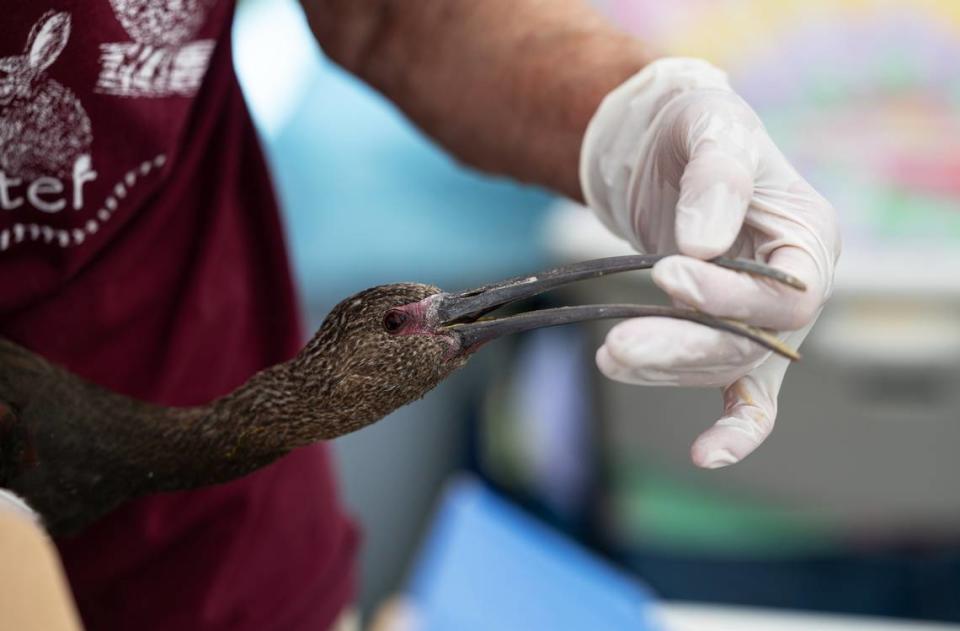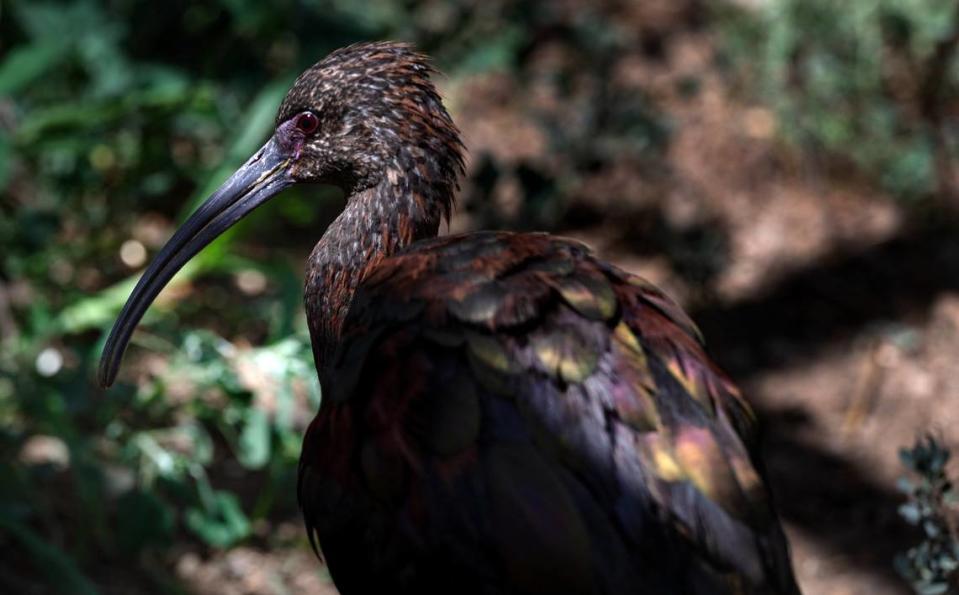Stanislaus wildlife center helping Tulare Lake birds that have fallen deadly ill
Birds struggling from the avian botulism outbreak at Tulare Lake are receiving care at the Stanislaus Wildlife Care Center outside Modesto.
As of Monday, the care center near Hughson had taken in 47 birds from the Tulare Lake outbreak in Kings County. The number of sick and dying birds in the outbreak has increased through the summer, but these new arrivals at the Hughson center have the best chance of making it.
The California Department of Fish and Wildlife is sending medium to large shore birds to the Hughson center.
“Between here and there, there are not any other facilities set up to take this many birds and provide adequate quarantine for them,” said Donna Burt, executive director of the Stanislaus care center.
Burt said the wildlife center has taken in white-faced ibis, different species of ducks, egrets, Great blue heron and dowitchers.
Tulare Lake was dry for many years, after it was drained and converted to agricultural land, but the storms and flooding this past winter brought it back to life.

Shore birds flocked to the resurrected freshwater lake, but it became a trap for avian botulism as the lake water started to become stagnant this summer.
The Stanislaus center said avian botulism occurs when normally dry grassy areas are flooded. The water warms up and the bacteria spreads from the rotting vegetation. A toxin released by the bacteria causes paralysis in birds exposed to the tainted water.
Burt said the wildlife care center is not accustomed to caring for large numbers of shore birds. About 450 animals are getting care from the staff and the sudden addition of almost 50 birds has been challenge. The center expects to receive birds from Tulare Lake into October.
The birds coming in from Tulare Lake are dehydrated and emaciated from not eating, Burt said. To care for them, staff members place a tube into their stomach to force feed them twice a day and give them fluids.

Burt said the chance of survival depends on how sick a bird is when it arrives. The toxin causes paralysis starting in the feet and moving up through the body. Badly infected birds cannot stand or lift their heads.
Birds that are trying to stand or are walking have a better chance of survival, Burt said. “They can work it out of their system, with fluids and food, assuming they are not too badly affected.”
About a dozen birds have recovered well and are ready for the state to release them at undisclosed locations, she said.
The Stanislaus care center was chosen for the work because it is fairly large and had space for the birds. In addition, the center has the ability to isolate the birds in case there’s any problem with contagious disease.

Avian botulism does not spread from bird to bird. Rather, a large number of birds may come into contact with the paralyzing toxins in the water.
Burt said the center is getting overflow from other care centers in California that are taking in birds from Tulare Lake.
Burt said the state will reimburse the center for the costs, but the Hughson center doesn’t know when those payments will come. The center is spending money now on supplies and could use some donation support.
Stanislaus Wildlife Care Center accepts donations on its website.


